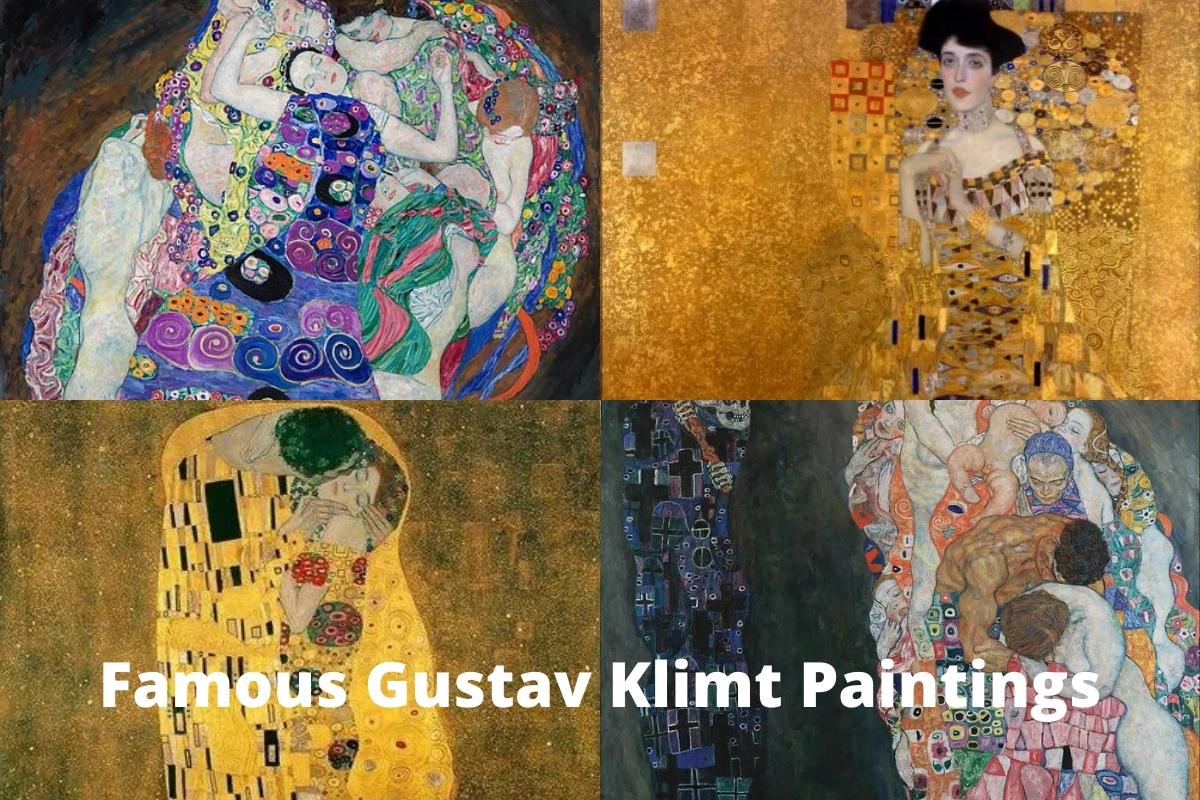Gustav Klimt (July 14, 1862 – February 6, 1918) was an Austrian symbolist painter who was a key figure in the Vienna Secession movement.
Klimt is well-known for his paintings, murals, drawings, and other works of art. Klimt’s principal topic was the female body, and his paintings are characterized by open sexuality.
Landscapes were among his figurative works, which included allegories and portraits. Klimt was the most affected by Japanese art and approaches of the Vienna Secession painters.
Early in his creative career, he was a successful traditional painter of architectural decorations. His work became the focus of controversy as he started to establish a more personal style, culminating when the paintings he did around 1900 for the ceiling of the Great Hall of the University of Vienna were denounced.
He did not take any more public contracts after that, but he found fresh popularity with the paintings of his “golden period,” many of which incorporate gold leaf. Klimt’s art had a significant effect on his younger contemporary, Egon Schiele.
Gustav Klimt Famous Paintings
1. The Kiss
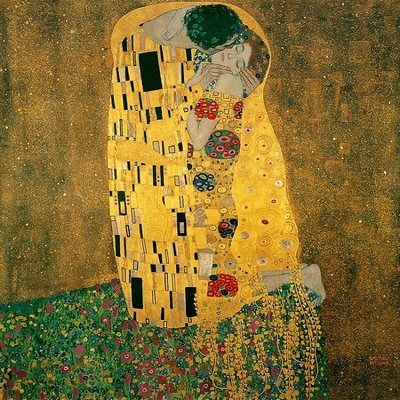
The Kiss (Der Kuss in German) is an oil-on-canvas artwork with gold leaf, silver, and platinum accents. It was painted between 1907 and 1908, during the height of Klimt’s “Golden Period”.
According to the exhibition book, it was first shown in 1908 under the title Liebespaar (the lovers). The artwork portrays a couple embracing, their bodies entangled in intricate magnificent robes embroidered in a way inspired by the present Art Nouveau style and the previous Arts and Crafts movement’s organic features.
The artwork presently sits at the Austriaische Galerie Belvedere museum in Vienna’s Belvedere and is regarded as a masterpiece of the Vienna Secession (a local version of Art Nouveau) and Klimt’s most famous painting.
It has also been suggested that Klimt depicted the moment Apollo kisses Daphne in this painting, based on Ovid’s Metamorphoses.
Art scholars believe Klimt illustrates the myth of Orpheus and Eurydice. Klimt seems to be depicting the precise moment when Orpheus turns around to caress Eurydice and loses his love forever.
The lady being held in this artwork is somewhat transparent, implying a fading away or disappearance—as stated in the narrative.
2. Portrait of Adele Bloch-Bauer I
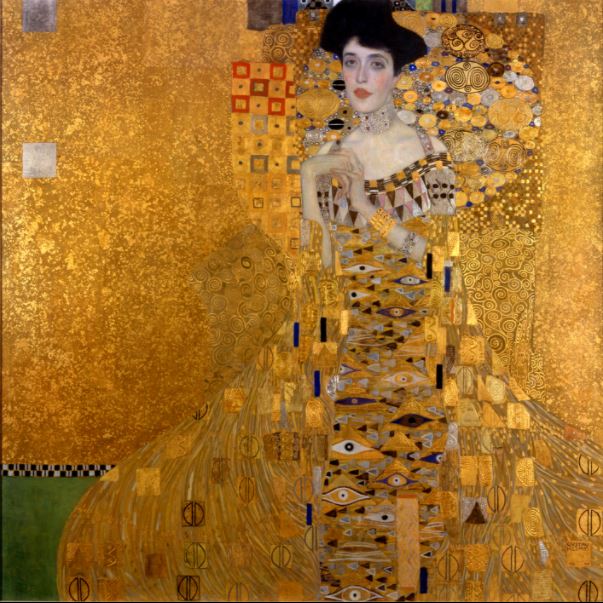
Adele Bloch-Bauer I (also known as The Lady in Gold or The Woman in Gold) was painted between 1903 and 1907. The sitter’s husband, Ferdinand Bloch-Bauer, a Jewish financier and sugar entrepreneur, commissioned the picture.
The Nazis confiscated the picture in 1941 and exhibited it in the Austriaische Galerie Belvedere. The portrait is Klimt’s last and most totally representative painting from his golden period.
It was the first of two portraits of Adele by Klimt, the second of which was done in 1912; these were two of numerous works by the artist possessed by the family.
Klimt displayed his image beside the Portrait of Fritza Riedler at the 1907 Mannheim International Art Show (1906). Many reviewers panned the two paintings, calling them “mosaic-like wall-grotesqueries,” “bizarre,” “absurdities,” and “vulgarities.”
The portrait was presented at the Kunstschau in Vienna in 1908, to mixed reviews.
3. Beethoven Frieze
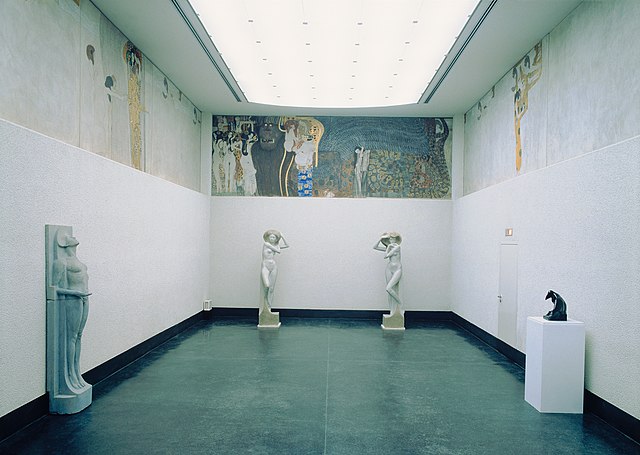
Klimt created the Beethoven Frieze in 1901 for the 14th Vienna Secessionist exhibition in honor of the musician, which included a huge polychrome sculpture by Max Klinger.
The frieze was created just for the show and was painted directly on the walls using light materials. The picture was saved after the show, but it was not displayed again until 1986. The Beethoven Frieze is on permanent exhibit in a specially created, climate-controlled underground area of the Vienna Secession Building.
The frieze is very massive, towering 7 feet tall and 112 feet wide. The total weight of the artwork is four tons.
4. Death and Life
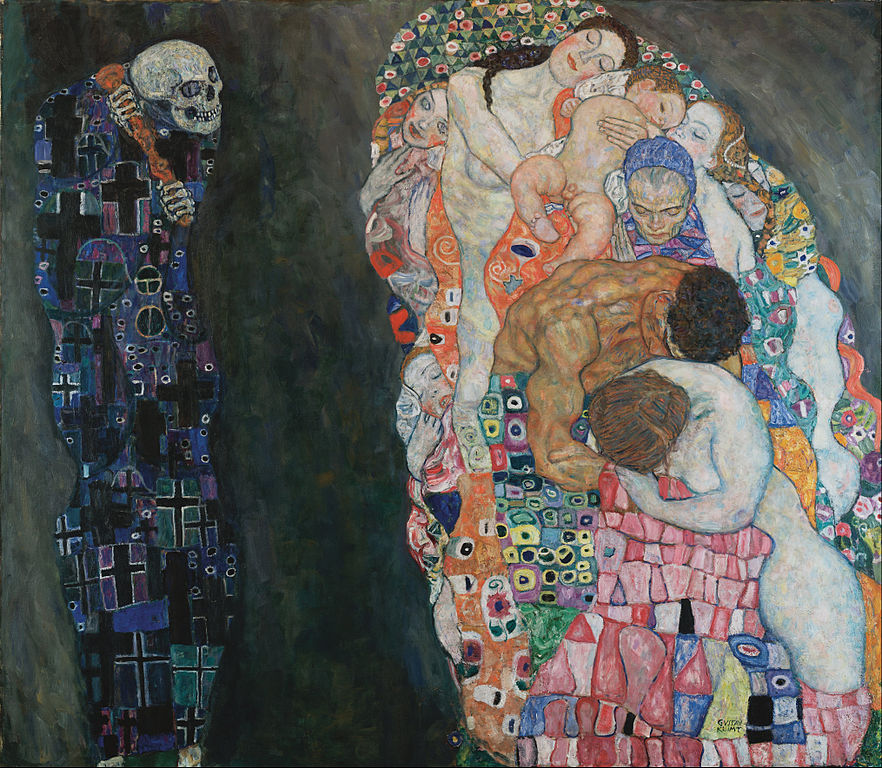
This piece was made during the Art Nouveau era, which was popular in his native Austria during the early twentieth century.
The 1915 painting has two unique clusters of pictures and figures separated by a black vacuum. The picture is said to reflect the notion of the afterlife, which many people seldom consider.
This is one of Klimt’s key motifs, as well as the topics of his period and contemporaries like as Edvard Munch and Egon Schiele. Klimt transforms it into a contemporary dance of death, but unlike Schiele, he adds a sense of optimism and reconciliation; instead of feeling scared by the figure of death, his human people seem to ignore it.
Also Read: Famous Austrian Painters
The artist’s mind is no longer centered on physical union, but rather on the expectancy that precedes it. Perhaps Klimt’s newfound tranquility stems from his own consciousness of age and impending mortality. Except it was before he decided to represent nothing but moments of extreme pleasure or astonishing beauty and freshness.
This one-of-a-kind artwork has aspects of Klimt’s sexuality while also presenting the spectator with a slew of smaller characters mashed together in an odd collage.
5. Judith and the Head of Holofernes
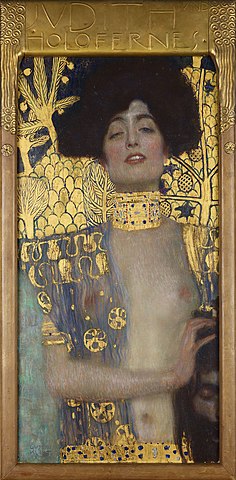
The oil painting Judith with the Head of Holofernes (also known as Judith I) was completed in 1901. It represents the biblical heroine Judith carrying Holofernes’ head after executing him.
The beheading and its aftermath have been depicted in art since the Renaissance, and Klimt would create a second piece on the topic in 1909.
Judith’s face is tinged with voluptuousness and wickedness. Its characteristics are transformed in order to reach the highest level of intensity and sensuality, which Klimt accomplishes by putting the lady on an unachievable plane.
Despite the differences in appearance, one may identify Klimt’s companion (and probably girlfriend), Viennese socialite Adele Bloch-Bauer.
6. The Tree of Life, Stoclet Frieze
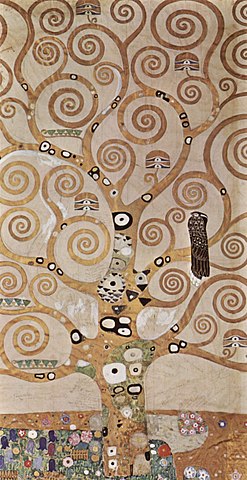
The Tree of Life, Stoclet Frieze is a 1909 artwork in the symbolic painting genre that is based on the Art Nouveau (Modern) style. The artwork measures 195 by 102 centimeters (77 by 40 in) and is located in the Museum of Applied Arts in Vienna, Austria.
The painting is a study for a set of three mosaics painted by Klimt for a commissioned work at the Palais Stoclet in Brussels, Belgium, between 1905 and 1911.
The mosaics, which feature whirling Trees of Life, a standing female figure, and an embracing couple, were made during the artist’s Late Works era. The mosaics cover three walls of the Palais’ dining room, as well as two figural parts opposite one other.
7. Danaë
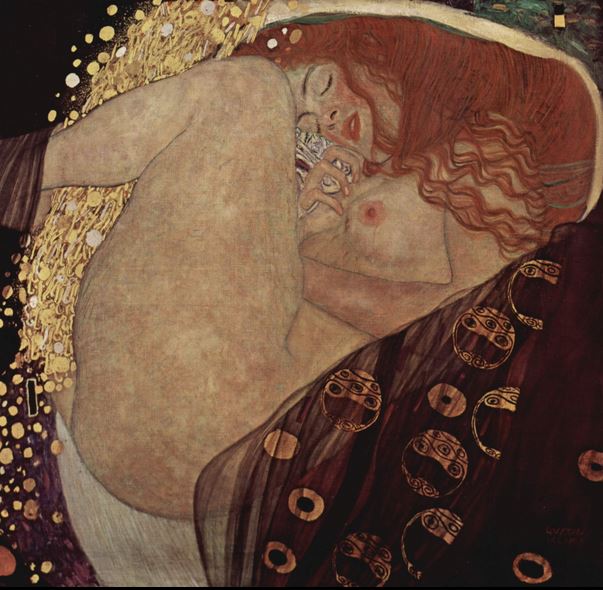
Danaë is an oil work that was completed in 1907. The picture, which measures 77 by 83 cm and is at the Galerie Würthle in Vienna, is an example of Symbolism.
Danaë was a favorite subject for many painters in the early 1900s; she was utilized as the archetypal emblem of heavenly love and transcendence.
Danaë was visited by Zeus when imprisoned in a bronze tower by her father Acrisius, King of Argos. Zeus is shown here as the golden rain streaming between her legs. The subject’s expression shows that she is attracted by the golden stream.
In this piece, she is draped in a regal purple veil, a nod to her imperial ancestry. She gave birth to a son, Perseus, sometime after her heavenly vision, who is credited later in Greek mythology with fighting the Gorgon Medusa and saving Andromeda.
8. The Three Ages of Woman
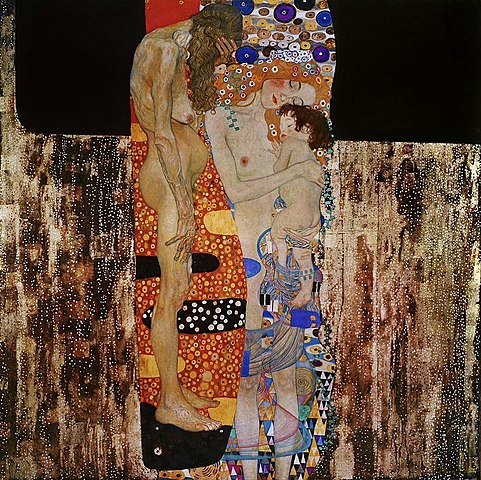
The artwork, Three Ages of Woman, was completed on a huge canvas and represents a woman at several periods of her life. The most renowned section, however, is known as Woman and Child and depicts a young mother cradling her child while surrounded by numerous varieties of flowers.
This piece is done with a great deal of detail in both the naked figure of the mother and her kid. Both the infant and the mother look to be asleep, and the whole artwork shows the many interactions between a woman and her family.
Klimt is noted for incorporating gold tones into many of his works, and this one is no different, as the mother is shown with long, golden-blonde hair that contrasts sharply with the child’s darker-colored hair.
9. The Maiden
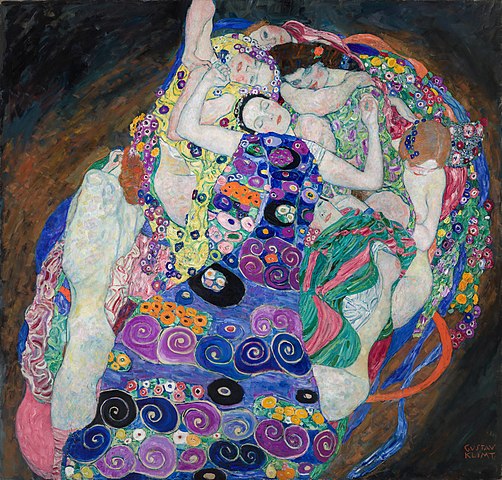
The Maiden is a patchwork quilt of young ladies at one with the coming-together of the whole, discernible as human shapes only by their pure white skin deep in sleep.
The profusion of flowers in the picture represents the transition into femininity. The picture features seven intertwined ladies.
Each lady symbolizes a different period of life. The picture depicts numerous aspects of human existence, such as love, sexuality, and regeneration, in a circular pattern.
10. Klimt University of Vienna Ceiling Paintings
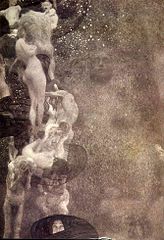

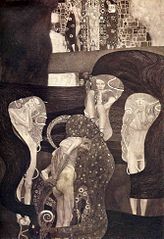
The Klimt University of Vienna Ceiling Paintings, also known as the Faculty Paintings, were a series of paintings created by Gustav Klimt between 1900 and 1907 for the ceiling of the University of Vienna’s Great Hall. Klimt was commissioned to paint the ceiling in 1894.
Klimt was chastised after displaying his paintings, Philosophy, Medicine, and Jurisprudence, for ‘pornography’ and ‘perverted excess’ in the works. None of the artworks would be shown at the university.
It is said that all three paintings were destroyed in May 1945 when fleeing SS soldiers set fire to the building where they were stored. However, this is unconfirmed.

